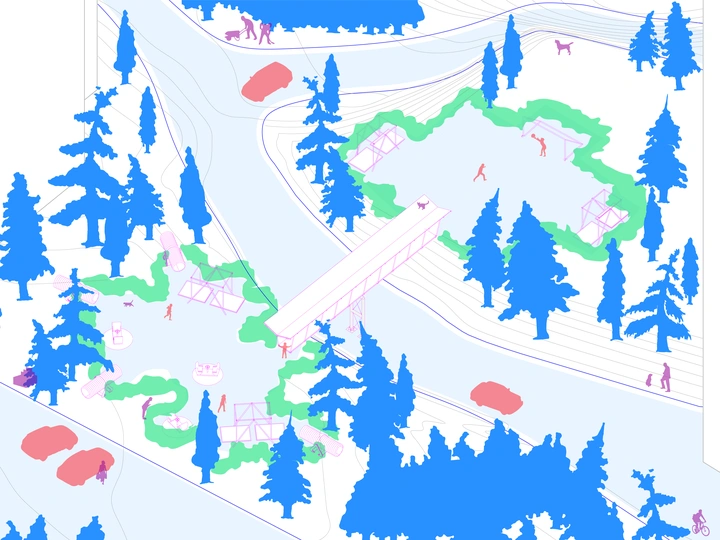CARING, PLAYING, DOUBLING

Nikolozi Kvatchrelishvili
Giorgi Zarandia
echofiction is a multimedia art collective based in Tbilisi, Georgia, Founded in 2022 by multimedia artist Nikoloz Kvatchrelishvili (QVA). Blending architecture, music and visual experimentation, echofiction's main focus are themes of memory, decay, and transformation, often intervening in abandoned or forgotten urban spaces. EF's architectural work operates at the intersection of trauma, adaptation and collective agency, focusing on processes of informal transformation and spatial negotiation. Across their projects, they use architecture as a tool to explore the deep entanglements of memory, displacement and shared responsibility.
In Caring, Playing, Doubling (2024), three friends and collaborators came together for a joint architectural project:
Nini Jabidze's focus is a meeting point of architecture, memory, and everyday life. She often engages with themes such as informality, collective identity, and the hidden narratives embedded in spatial boundaries. She is currently also a part of Udzo Practice, where they explore materiality as a tool for storytelling and spatial transformation.
Nikoloz Kvatchrelishvili is a multimedia artist based in Tbilisi and the founder of the echofiction art collective. He is currently in his final year of the architecture program at the Free University of Tbilisi.
Giorgi Zarandia is a student at the Visual Arts, Architecture and Design School (VA[A]DS). His work centers on the transformation of spaces over time and how built environments respond to shifts in use, meaning, and inhabitation.
In the Bagebi area of Tbilisi, stands the “StudKalaki” (student town) complex, a pair of USSR era concrete megaliths. They represent the transformation of non-housing Soviet infrastructure into livable spaces post 1992 Abkhaz-Georgian war. Built in the 80s as student dormitories, these buildings were repurposed by IDPs who took over the vacant ground floor spaces, initially buffets and open halls-adapting them into gathering spaces, memorials, places of worship, markets etc. These interventions emerged out of necessity, as a response to the absence of governmental care: If nobody cares for us, we must learn to take care of ourselves.
But one group had little to no agency to shape these public spaces-children. Through the process of survival, adults were too overwhelmed to consider the needs of the youngest. The only spaces made specifically for kids-the standardized, run-down playgrounds built by the government stand abandoned in distant corners and remain neglected/disconnected.
This project is a response to that absence. It asks: what does it mean to create space for a child who only knowns environment shaped by the consequences of war? They absorb the world as it is given to them, shaping their human experience and the lens through which they view the world for the rest of their lives.
In our project we use teeter-totter as a metaphor representing the idea of doubling. The two homes of the IDPs, one-which they lost in Abkhazia and the one in Tbilisi, Two similar buildings in the complex and two sides of the conflict itself-Abkhazians and Georgians. This idea of doubling continues manifesting itself in our intervention. Two playgrounds: one square, for structured games with rules like football and one irregular, for free play, imagination, and invention. Modified teeter-totter objects set the necessary conditions to connect the two sides through play.
WE NEED PLAYGROUNDS AS COMMON GROUNDS! And let the children rebuild things that we, adults, have destroyed.